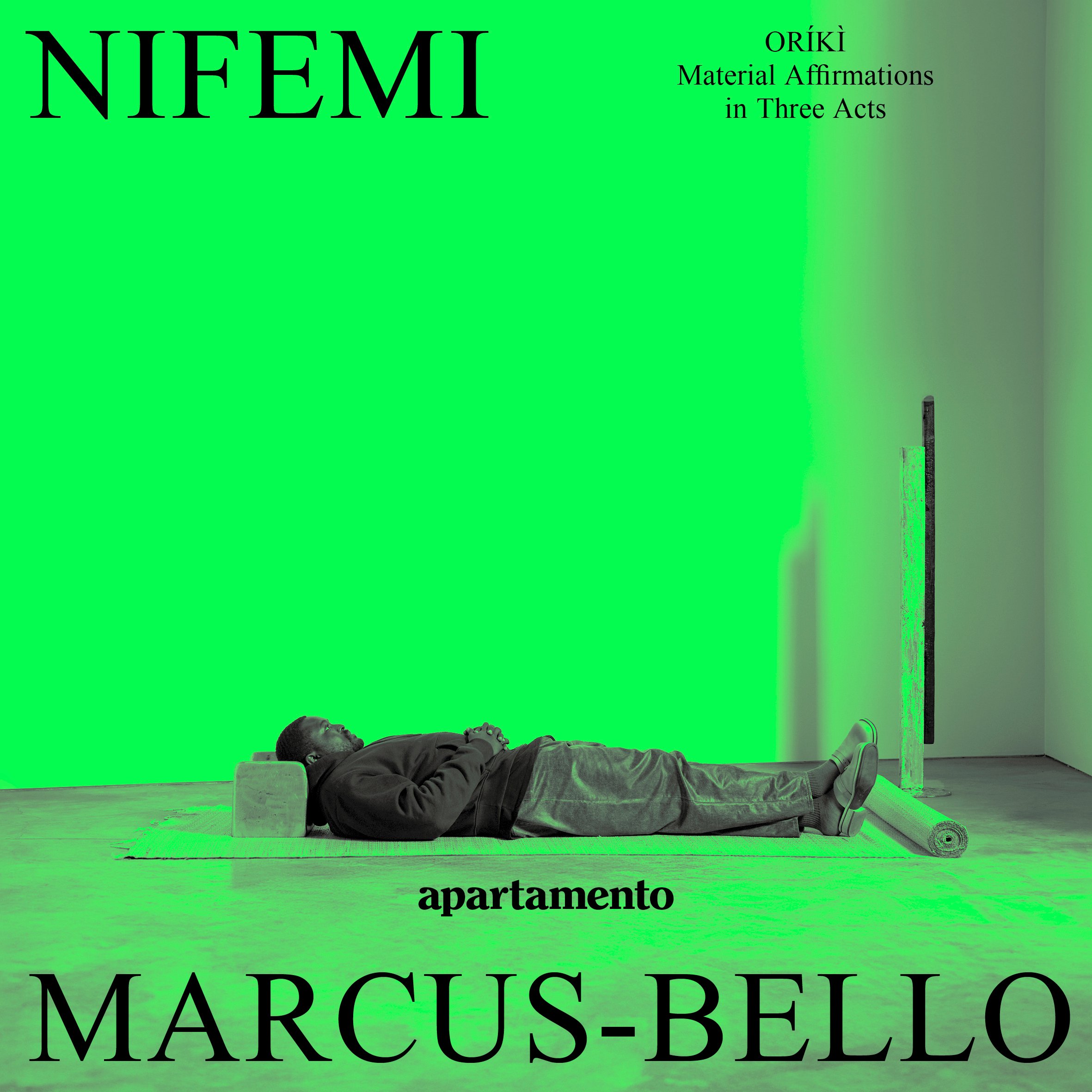Nifemi Marcus-Bello in Lagos: ‘The conditions and histories of Africa are my greatest inspiration’
As the Nigerian designer stages ‘Material Affirmations: Acts I–III’ at Tiwani Contemporary (until 10 January 2026), he speaks to Wallpaper* about African craft and industry, and Lagos as his muse
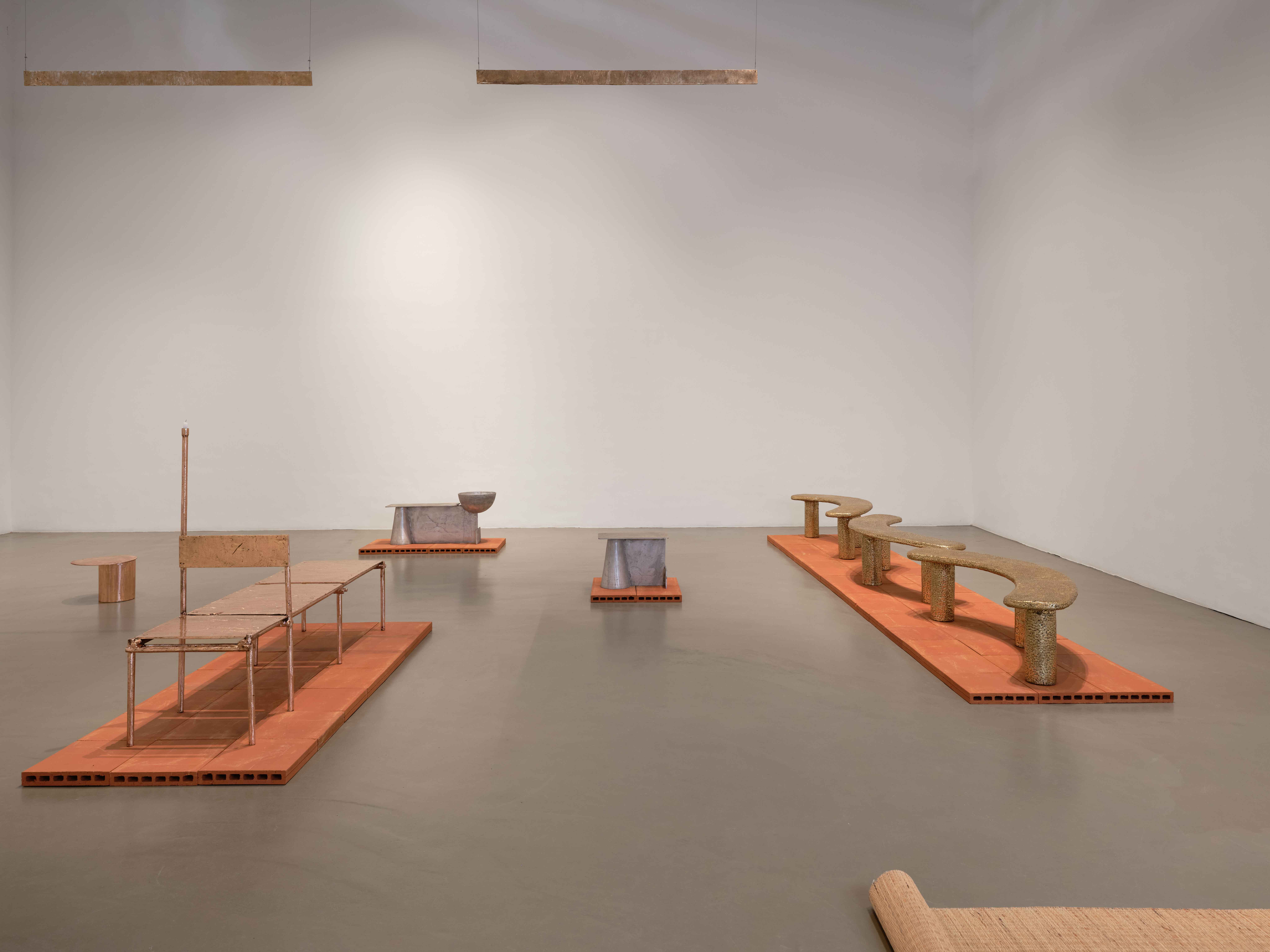
For Nigerian designer Nifemi Marcus-Bello, Lagos is more than a backdrop; it is both his muse and method, a city whose histories, hidden systems, and improvisational industries continue to shape how he makes and thinks. Now, after what seems like an adventure around the world, Marcus-Bello returns home with his first-ever Lagos solo exhibition, ‘Material Affirmations: Oríkì Acts I–III’, at Tiwani Contemporary (on view until 10 January 2026), marking just another milestone in the designer's practice.

Nifemi Marcus-Bello at Tiwani Contemporary in Lagos, amid some of his works in the exhibition
Ordinarily, oríkì is a Yoruba word meaning ‘praise poetry’, a form of oral literature used to celebrate, honour, and invoke the essence of a person, a place, a lineage, or even a deity. In Nifemi’s world, it is a merging of industrial design with cultural memory. His ‘Oríkì’ series of designs explores the intersections of material and identity. Comprising three parts or ‘acts’ – ‘Friction Ridge’; ‘Tales by Moonlight’; and ‘Whispers of a Trail’, each of which has been the subject of previous exhibitions as the series has evolved – draws on bronze, aluminium, and copper to reflect on Africa’s histories of making and transformation. Each material serves a purpose: bronze recalls the legacy of West African metalwork, aluminium speaks to Lagos’ informal economies of repair and reinvention, and copper captures the elemental forces of exchange and transformation.
Wallpaper* sat with Nifemi to discuss ‘Material Affirmations – Oríkì Acts I–III’, which unites the whole series of works, and the city of Lagos as his muse.
Nifemi Marcus-Bello on ‘Oríkì Acts I–III’
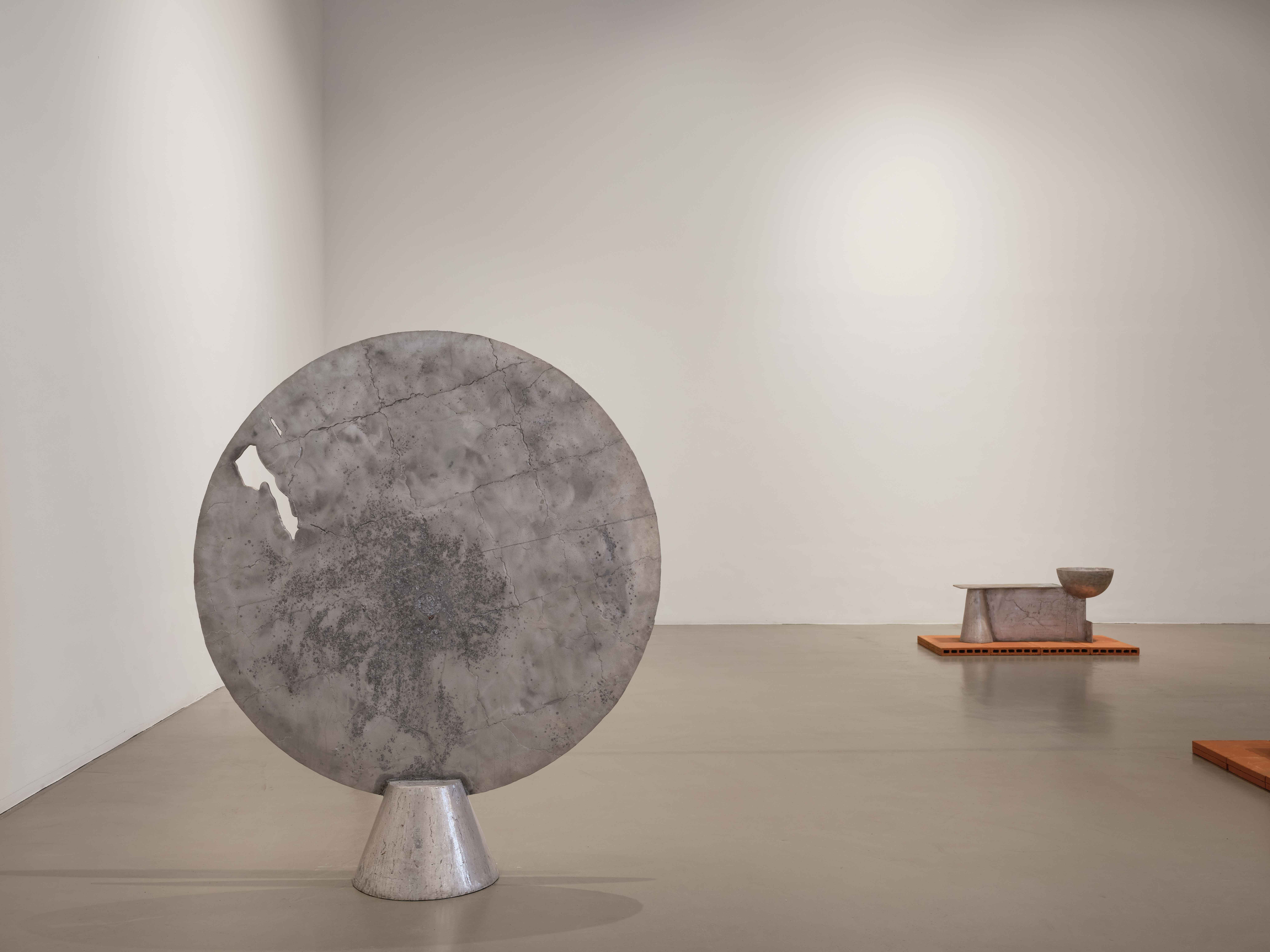
Wallpaper*: This is your first solo exhibition in Lagos; how do you feel about that?
Nifemi Marcus-Bello: It feels both grounding and expansive. Lagos is not just where I live and work, it’s the city and place that inspired this body of work. The conditions and histories of Africa are my greatest sources of inspiration: the solutions that are found, the histories that are hidden, the ingenuity and resilience that define everyday life. There’s an elegant, elemental beauty in that perseverance. The spirit of Lagos, its ability to adapt, create, and endure run through every piece in the series. Showing the beauty and sophistication within that reality is what this work is really about. And seeing how my family, friends, and local audience respond to it is nourishing and inspiring.

W*: Remind us how the whole ‘Oríkì’ series started and where you’ve presented its various acts?
NM: The series began in 2023 as a way to explore material, identity, and the unseen networks that shape how things are made. ‘Act I – Friction Ridge’ focused on repetition, touch, and the relationship between the maker and the surface of the object. ‘Act II – Tales by Moonlight’, presented at Design Miami 2023, looked outward – tracing stories of production and adaptation through Lagos’ informal industries, especially the auto-part casters who repair and reimagine what global systems discard. ‘Act III — Whispers of a Trail’, which opened this year at Marta in Los Angeles, turns its attention to copper, a single elemental material through which I’ve been examining the politics of extraction, refinement, and transformation. Across the three acts, the series maps an evolving conversation about material life; how design, craft, and survival are deeply intertwined across the continent.
Receive our daily digest of inspiration, escapism and design stories from around the world direct to your inbox.
I’ve always been drawn to the everyday objects that define how we live and move through the world. Beyond ‘Oríkì’, some of the other works I’m recognised for include the ‘LM Stool’ (2018), which came from working directly with a Lagos factory that produced metal casings for generators – we reimagined what could be made from that same sheet metal using subtraction rather than addition. The ‘Selah Lamp’ (2019) extended that thinking, designed to be quiet and adaptable – a single folded piece that could be a lamp, stool, or shelf.
All of this connects to my ongoing research platform, Africa – A Designer’s Utopia, which looks at the informal networks of production across the continent – how people design and build through necessity, with intelligence and ingenuity. That world of improvised systems and resilient solutions continues to be my biggest inspiration.
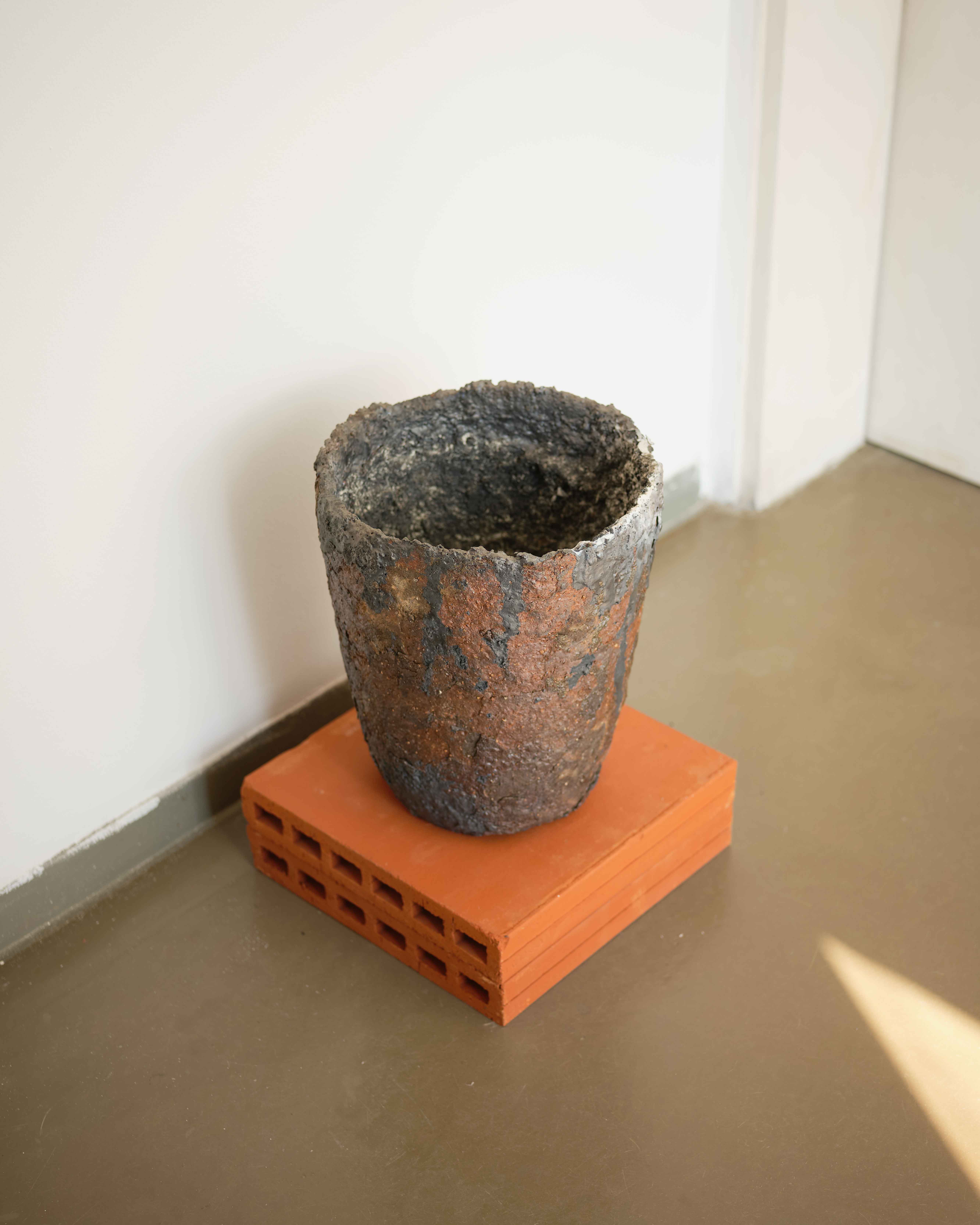
W*: Is the Lagos exhibition a continuation of your presentation at Marta, Los Angeles?
NM: Yes, but it’s also a return. The presentation in Los Angeles closed the ‘Oríkì’ trilogy, but this exhibition brings those ideas back to the place that first inspired them. The Lagos show doesn’t repeat what was shown at Marta; instead, it recontextualises it. It’s a way of seeing how those same ideas, about extraction, transformation, and the poetry of material, live and breathe within the environment that shaped them, and in conversation with one another.

W*: What made you want to use praise poetry as the idea behind this series?
NM: Oríkì is both praise and poetry, a way of naming that carries memory, lineage, and identity. The idea of it is so close to the heart of design. An oríkì is not just about describing someone or something, but invoking their essence. That felt very close to how I think about making: as an act of remembrance and affirmation. Each work in the series is its own kind of oríkì – a way of honouring the hands, histories, and materials that define our world.

W* You worked with bronze, aluminium, and copper – why those materials in particular?
NM: Each of these materials carries a different layer of meaning and history, and each is found here on the continent, and too often extracted and exported. Bronze connects to longstanding casting traditions across West Africa; it’s a material of memory and legacy. Aluminium speaks to the present, to the improvisational industries of Lagos where it’s constantly melted, reformed, and repurposed. And copper, which became the focus of ‘Act III’, is elemental; it embodies conductivity, transformation, and exchange.

W*: There’s a clear nod to the Benin bronzes and metal traditions across West Africa. How do those histories show up in your work?
NM: Those histories are part of the foundation of how I think about making. The Benin bronzes, and other metal traditions across West Africa, represent an advanced understanding of material, symbolism, and narrative; they were never just decorative – they were records of power, spirituality, and community. I’m interested in continuing that dialogue, not by recreating those forms, but by exploring how those same ideas of casting, storytelling, and transformation live in the present. In Lagos, metalwork is still everywhere, but now it exists in scrapyards, auto workshops, and foundries. My work tries to bridge those worlds. To show that the same spirit of invention and cultural memory persists, just in different forms.
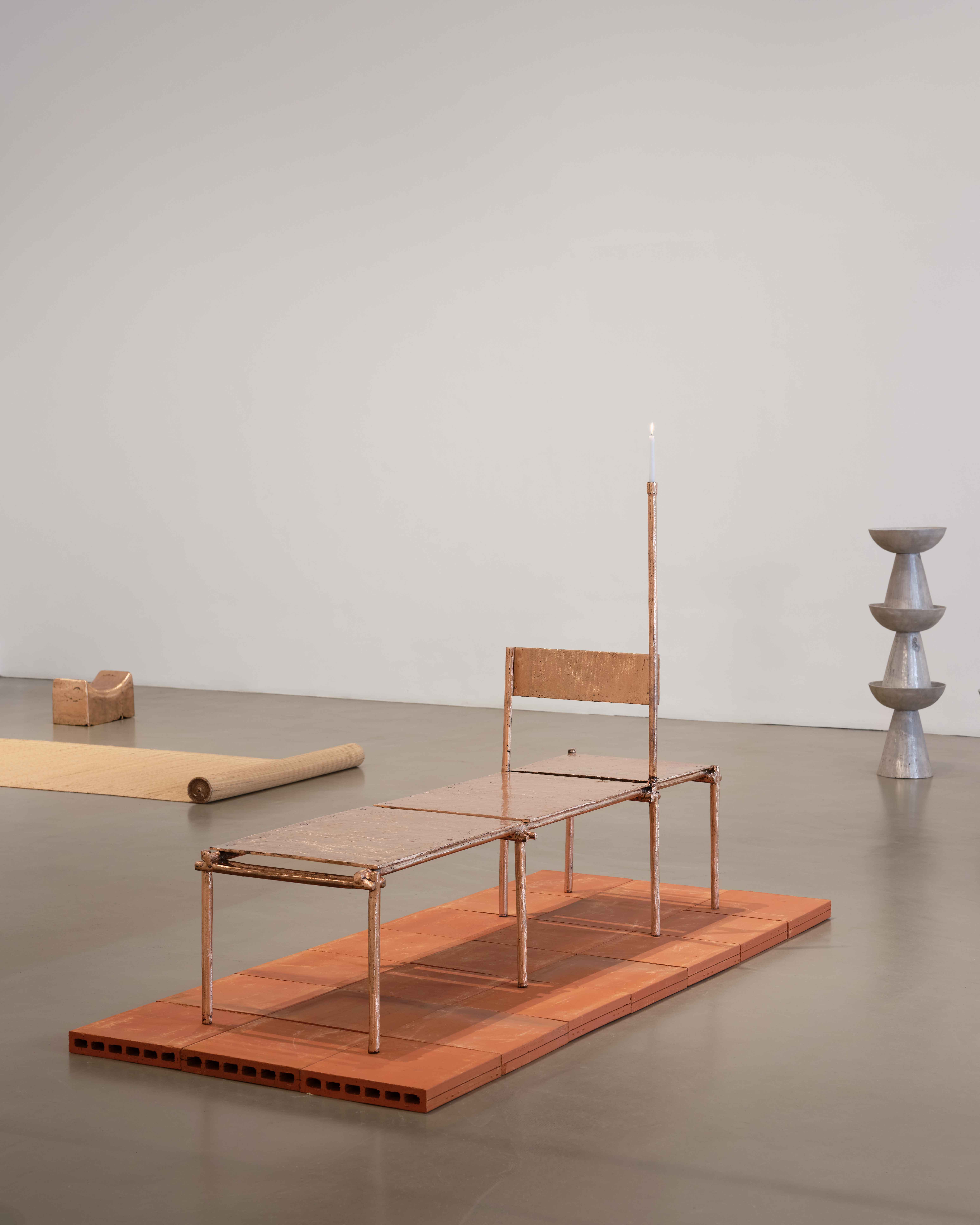
W*: You mentioned that some of the aluminium pieces came from Lagos’ auto industry. How do you see the link between industry and craft in what you do?
NM: In Lagos, the line between industry and craft is very thin, sometimes it doesn’t exist at all. The same foundries that cast engine parts are often the ones helping me make these works. There’s a deep, intuitive understanding of material and process in those spaces, even if it isn’t formalised as ‘design’. For me, that’s where the most interesting ideas come from; the overlap between improvisation and precision, between survival and creation. Industry and craft here aren’t opposites; they’re part of one continuous system of making, shaped by necessity, resourcefulness, and care.
W*: The accompanying monograph features voices including Eames Demetrios and Glenn Adamson. How did those conversations shape how you see the project now?
NM: Those dialogues helped position this work, and African design more broadly, within the global context of design history. Eames and Glenn both brought perspectives that situate making in Lagos as part of a much larger lineage of design thinking, not outside of it. Their reflections underscored that the processes, materials, and problem-solving happening here are just as vital to the evolution of global design as what’s documented in Western institutions. That acknowledgment matters; it reframes African design not as peripheral or emerging, but as foundational, continuously innovating and redefining what design can be.
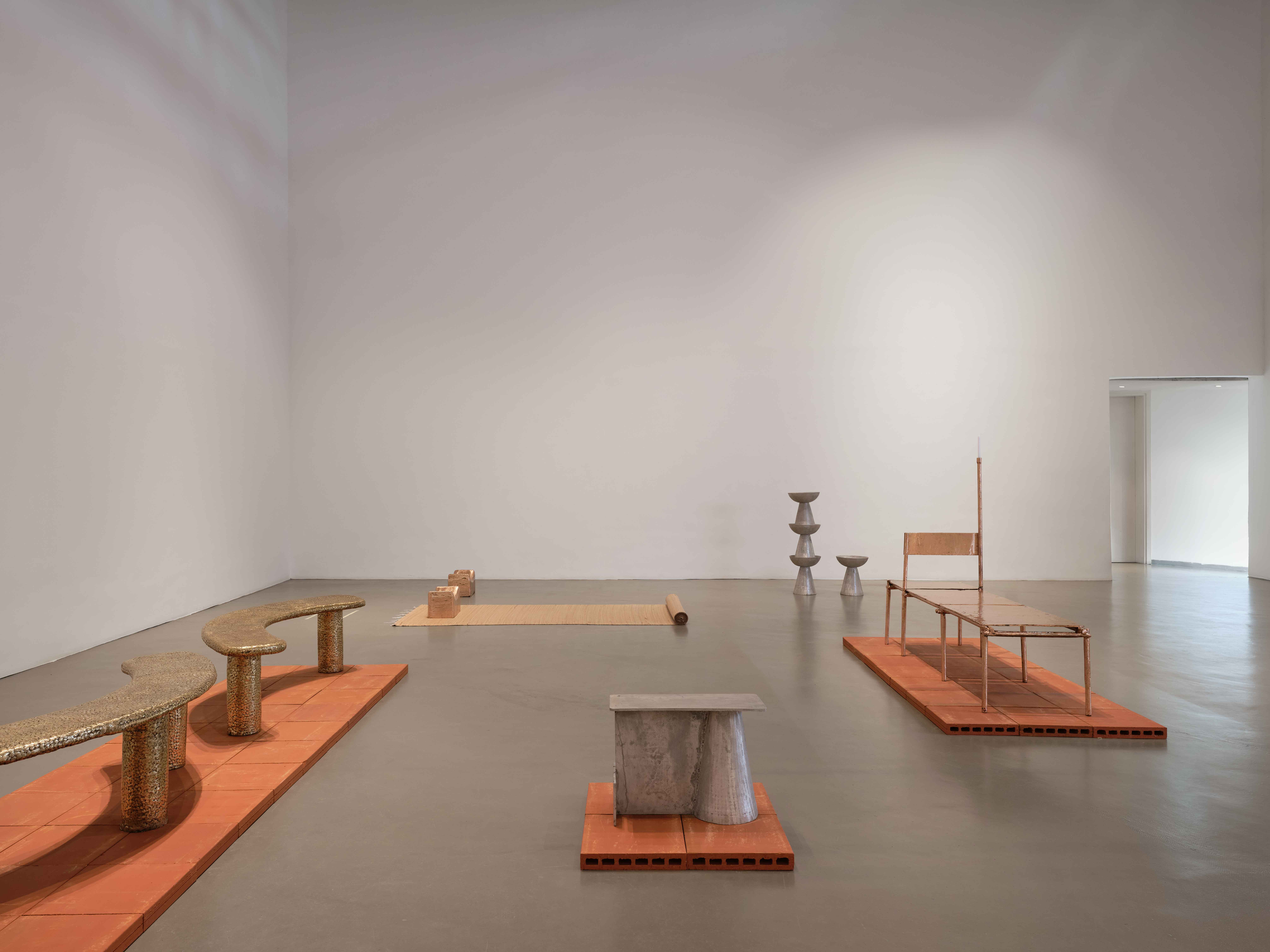
W*: This show covers ‘Acts I–III’; do you think there’ll be more acts to come or is this the full story for now?
NM: Honestly, I don’t know. The ‘Oríkì’ series feels complete in its current form, but the questions it raised, about material, place, and identity, are still very alive for me. I think of these acts less as an ending and more as a foundation. The work continues to evolve through new contexts, new collaborations, new materials. So while this chapter might be closed, the ideas will keep unfolding in different ways.
‘Material Affirmations: Oríkì Acts I–III’ is on view at Tiwani Contemporary until 10 January 2026
13 Elsie Femi Pearse Street
Victoria Island
Lagos
Ugonna-Ora Owoh is a journalist and editor based in Lagos, Nigeria. He writes on arts, fashion, design, politics and contributes to Vogue, New York Times, Wallpaper, Wepresent, Interior Design, Foreign Policy and others.
-
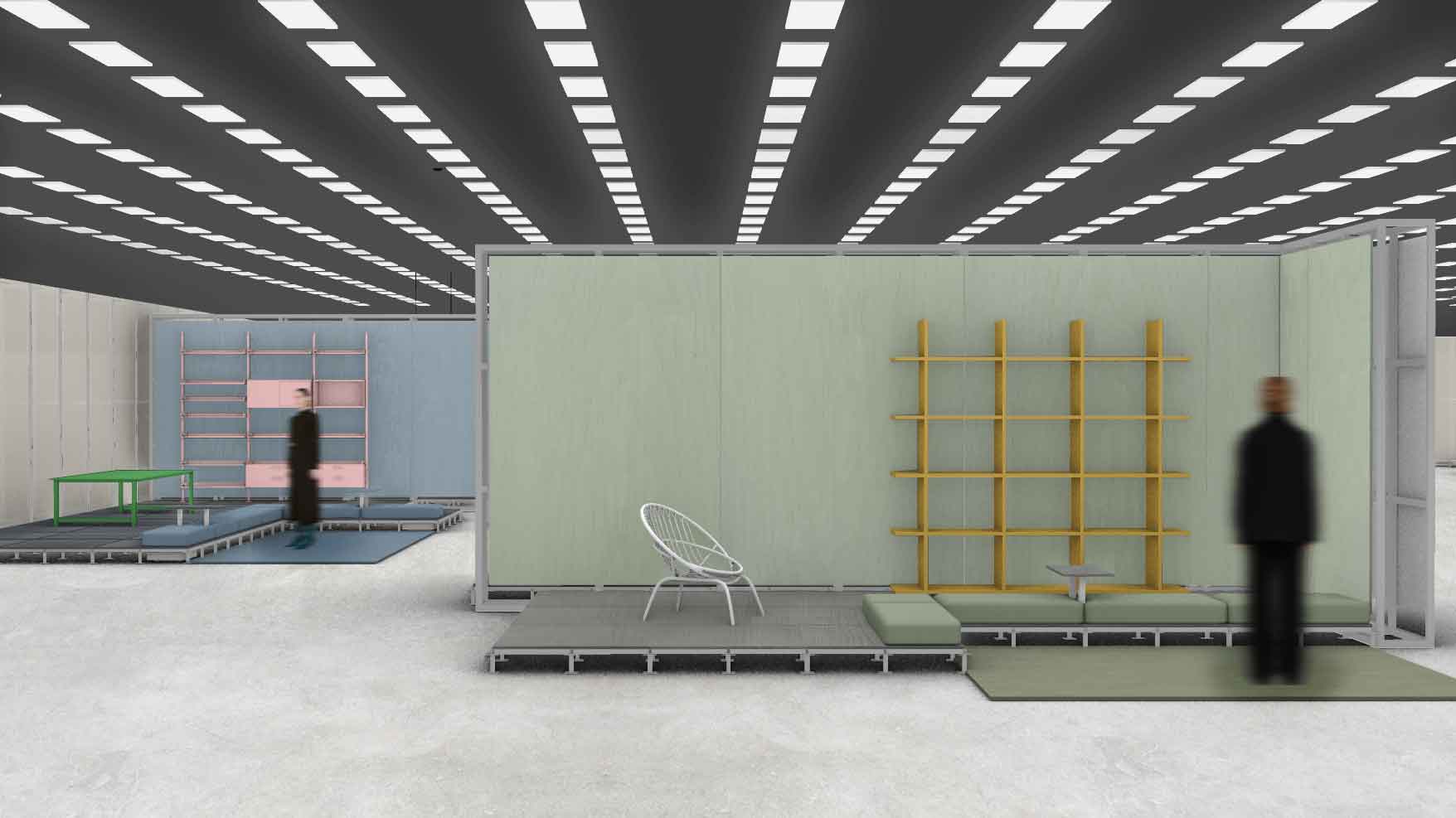 Salone del Mobile 2026 will embrace collectible design with Salone Raritas
Salone del Mobile 2026 will embrace collectible design with Salone RaritasToday, Salone del Mobile announced Salone Raritas, a new exhibition space at the fair (from 21-26 April 2026) which will open its grounds to collectible design, curated by Annalisa Rosso and created in collaboration with Formafantasma
-
 Inside Coreen Simpson’s fabulous, jewellery- and art-filled world
Inside Coreen Simpson’s fabulous, jewellery- and art-filled worldTo mark the publication of ‘Coreen Simpson: A Monograph’, we meet the octogenarian photographer and jewellery designer over Zoom, and take a deep dive into her world
-
 Fancy owning a piece of French automotive history? Bid in The Renault Icons Auction
Fancy owning a piece of French automotive history? Bid in The Renault Icons AuctionRenault is paring back its substantial collection of historic automobiles by auctioning off duplicate models. We present 14 of the finest lots
-
 Postcard from Lagos Design Week 2025
Postcard from Lagos Design Week 2025This year's Lagos Design Week demonstrated how Nigerian and African designers continue to expand the language of form, texture, and material
-
 Yinka Ilori’s new foundation is dedicated to play and joy: ‘Play gave me freedom to dream’
Yinka Ilori’s new foundation is dedicated to play and joy: ‘Play gave me freedom to dream’Today, artist and designer Yinka Ilori announced the launch of a non-profit organisation that debuts with a playscape in Nigeria
-
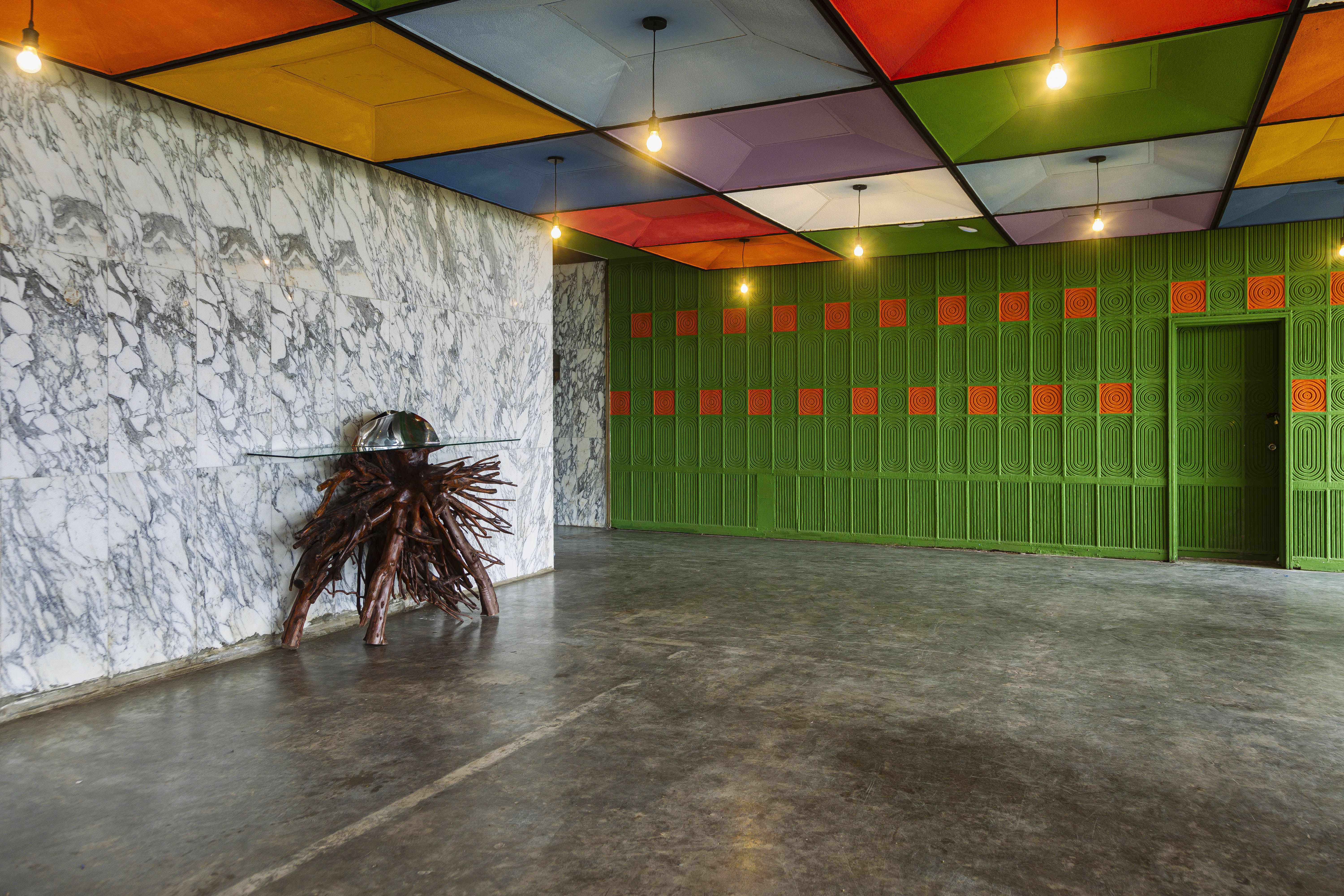 Inside Nahous, Lagos’ new creative hub in a brutalist 1970s building
Inside Nahous, Lagos’ new creative hub in a brutalist 1970s buildingRichard Vedelago on Nahous: the gallerist tells Wallpaper* how he hopes this new space will shape Lagos’ bustling creative ecosystem
-
 How Lagos’ street markets inspired a new generation of Nigerian creatives
How Lagos’ street markets inspired a new generation of Nigerian creativesNigeria’s creative scene is embracing the informal structures used by Lagos market traders as paragons of adaptability, flexibility and identity
